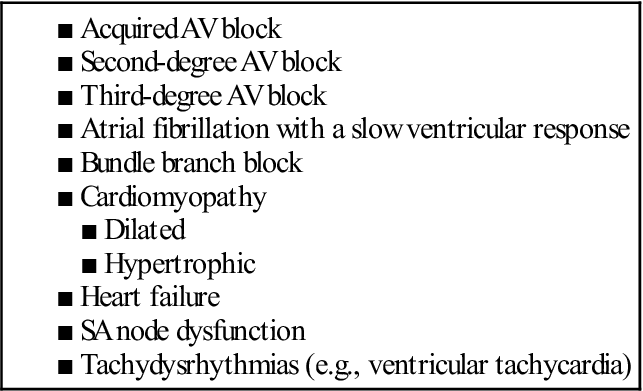P
Pacemakers
Description
The artificial cardiac pacemaker is an electronic device used to pace the heart when the normal conduction pathway is damaged. The basic pacing circuit consists of a power source (battery- powered pulse generator), one or more conducting leads (pacing leads), and the myocardium. The electrical signal (stimulus) travels from the pacemaker, through the leads, to the wall of the myocardium. The myocardium is “captured” and stimulated to contract.
Demand pacemakers, which are the most common, have the ability to sense the heart’s electrical activity and fire only when the heart rate (HR) drops below a preset rate. Demand pacemakers have two distinct features: (1) a sensing device that inhibits the pacemaker when the HR is adequate and (2) a pacing device that triggers the pacemaker when no QRS complexes occur within a preset time.
Permanent pacemakers are implanted entirely within the patient’s body. The power source is implanted subcutaneously, usually over the pectoral muscle on the patient’s nondominant side. It is attached to pacer leads, which are threaded transvenously (through a vein) to the right atrium and one or both ventricles. Indications for insertion of a permanent pacemaker are listed in Table 99.
A temporary pacemaker is one that has the power source outside the body. There are three types of temporary pacemakers: transvenous, epicardial, and transcutaneous. Table 100 lists common reasons for temporary pacing.
Table 100
Indications for Temporary Pacemakers*

Patient monitoring
Patients with temporary or permanent pacemakers are monitored by ECG to evaluate the status of the pacemaker. Pacemaker malfunction primarily involves a failure to sense or a failure to capture.
Stay updated, free articles. Join our Telegram channel

Full access? Get Clinical Tree



